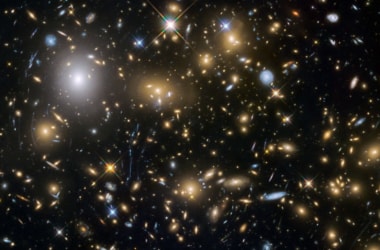
The universe contains around 2 trillion galaxies, ten times more than previously thought according to a new study.
Astronomers have sought to study how much the number of galaxies are in the observable universe equals.
Scientists have used images from Hubble Space Telescope to estimate that the universe contains 100-200 billion galaxies.
Presently, technology permits just 10 percent of these galaxies to be studied and remaining 90 percent will be seen once bigger and better telescopes are developed.
Pencil beam images of deep space from telescopes around the world, and especially from the Hubble telescope, were converted into 3D maps.
This permits the density of the galaxies as well as volume of one small region of space following another to be studied.
Like an intergalactic archaeological dig, the research has enabled the team to establish how many galaxies have been missed.
Results of the study are based on the measurement of number of observed galaxies at different epochs through the universe history.
The scientists have examined how many galaxies there were at a given epoch they found that were significantly more at earlier times.
When the universe was a few billion years old, there were 10 times as many galaxies in a given volume of space as there were within a similar volume in present times.
Most galaxies are low mass systems with masses similar to those of the satellite galaxies surrounding the Milky Way.
Over 13.7 billion years of cosmic evolution since the Big Bang saw galaxies that have been growing through star formation and merger with other galaxies.
This suggests significant evolution must have occurred to reduce their number through extensive merging of systems.